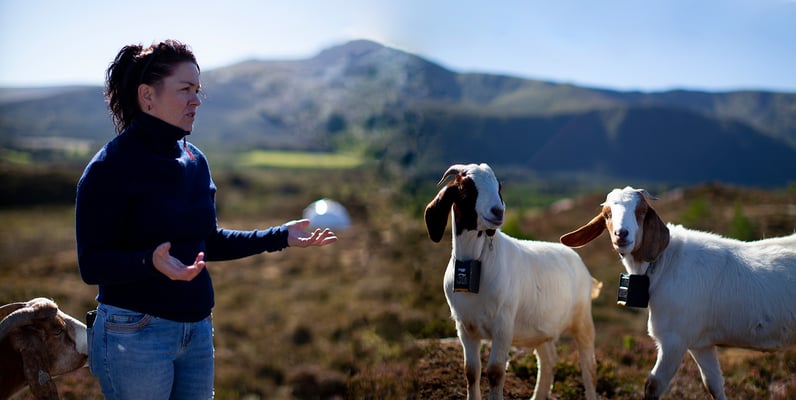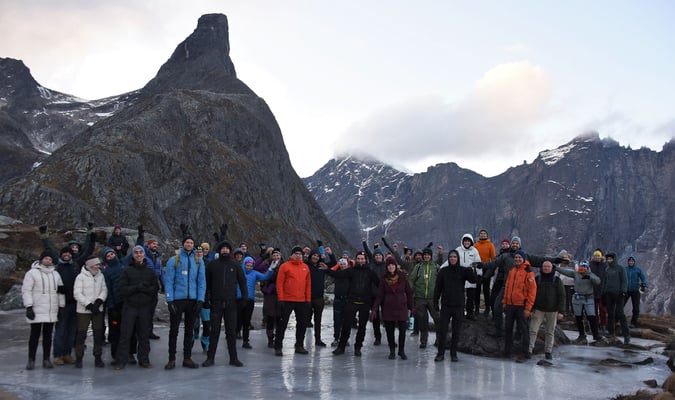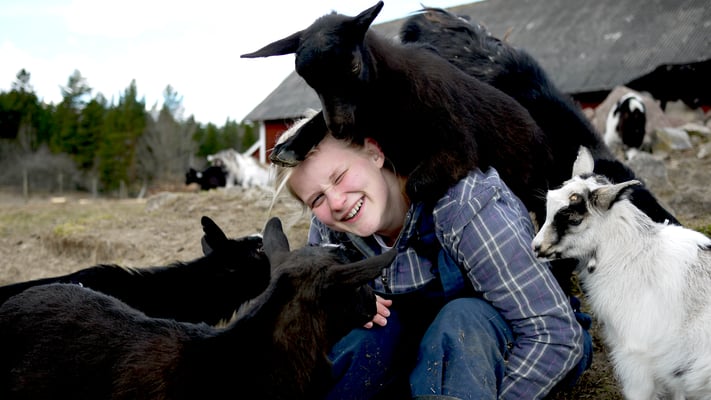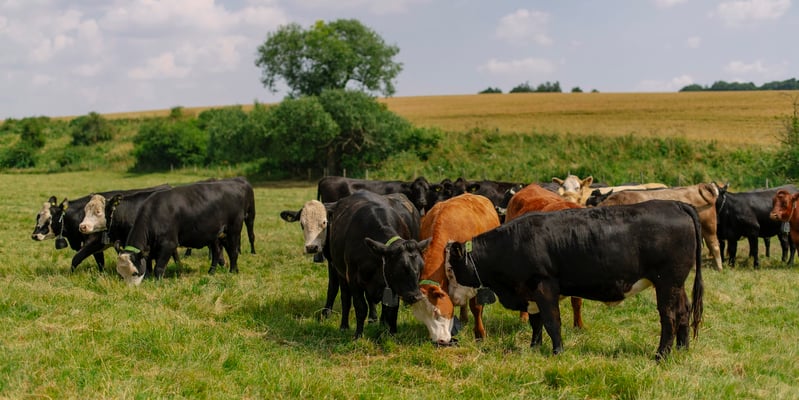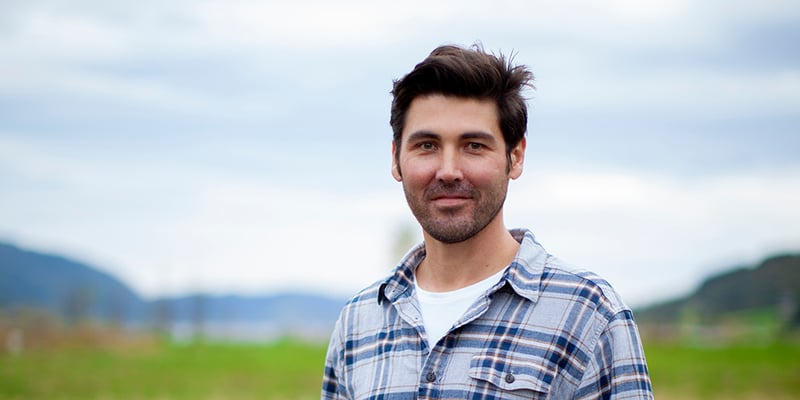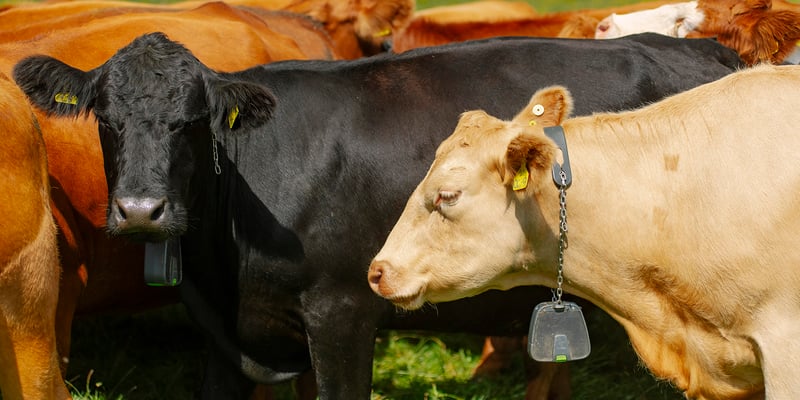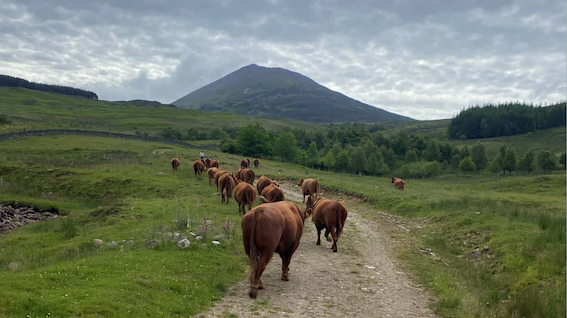
Nofence increases upland farm’s grazing area by 150 percent

In the steep hills of Highland Perthshire, the rugged terrain paired with the scale of the remote landscape presents beef producers with equal parts opportunity and challenge when it comes to grazing. On one hand, there is an opportunity to return cattle to the landscape for conservation and commercial benefit. But on the other hand, there is little to no fencing infrastructure.
With over 1,500 acres of their 2,500 acre property consisting of unfenced open heather moorland, at an elevation of 400 to 1,000m and mostly designated as a Site of Special Scientific Interest, Andrew and Kate Duncan are no exception to this.
“As new entrants looking to grow a farming business, we are keen to make full use of the ground we have available and, up until this year, we have not been able to graze the majority of the moorland,” says Mr Duncan. “The remote hill will not have seen grazing cattle for more than 100 years given the lack of fencing.”
The Duncan’s introduced Nofence virtual fencing technology
In a bid to overcome this infrastructure challenge, the Duncan’s introduced Nofence virtual fencing technology to their herd at the start of 2021 putting collars on 20 of their pedigree Luing cows for summer grazing in the hills – becoming one of the first commercial farms in Scotland to implement this technology. Nofence has subsequently been named the winner of the 2022 AgriScot Innovation Award.
“We are very conscious of the environmental impact of our farming systems and combined with the scenic landscape and cost of a physical fence for cattle, this was out of the question, so we were excited to discover this new technology,” says Mr Duncan.
How does Nofence virtual fencing work?
Nofence works by tracking animal location using GPS linked to the solar powered Nofence collar. Farmers can set a pasture using the Nofence app to draw out a virtual boundary. As an animal approaches the virtual boundary, an audio warning will sound.
“If the animal does not turn around when cued by the third audio warning, it will receive an electric pulse. When a collar issues a pulse it immediately sends a pop-up notification to the farmer via the Nofence app with the location of the animal,” says Synne Foss Budal, General Manager. “Cattle learn very quickly to adapt to the technology, using their ears rather than their eyes to detect fencing boundaries. Our data shows that it’s uncommon for an animal to receive a pulse, and rare for one to escape completely.”
For animals that push the boundary regularly, it will never receive more than three pulses. It will also be allowed to re-join the herd freely without receiving audio warnings or pulses as it returns to pasture.
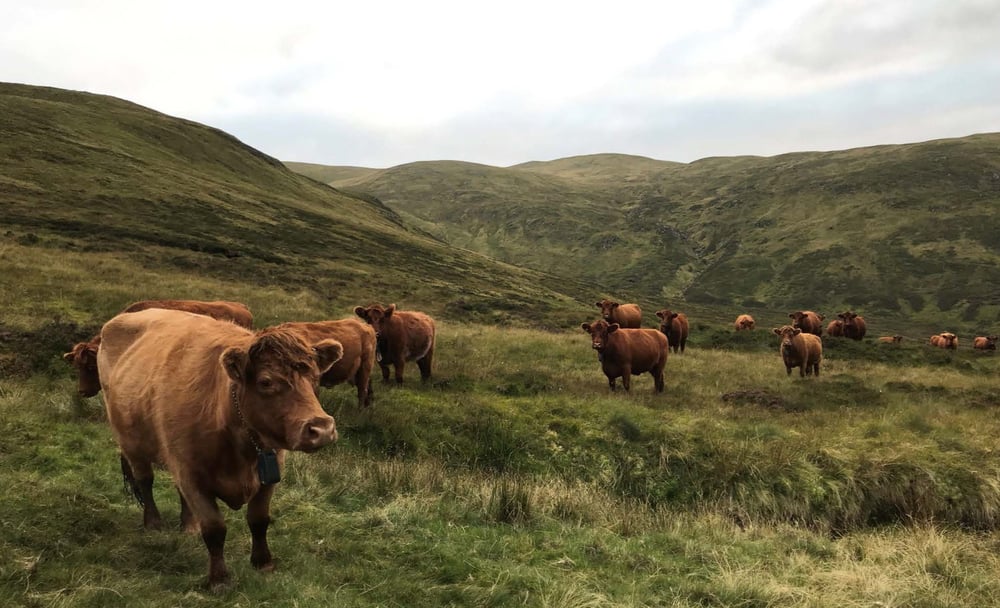
Training the cows to allow them to understand the signals
In Mr Duncan’s experience, on the rare instance of an escape, the cow re-joined the herd without the need for his involvement. The instant notification and location tracker allow him to keep an eye on things so he can intervene if necessary.
“After fitting the collars we trained the cows in a small paddock to allow them to understand the audio cues in correlation with the boundary. They caught on quickly,” says Mr Duncan. “We have found that often the only cows getting a pulse are repeat offenders – it is circa five percent of the animals that receive 50 percent of the pulses and there seems to be a direct correlation with the same animals that cause issues elsewhere, like not wanting to through the race!”
Managing grazing with no fences
Having been using the virtual fencing technology for over a year the Duncan’s have gone from grazing 40 percent of their acreage to 100 percent. It has also allowed the couple to extend the grazing season for their cattle and allowed for future expansion.
With the couples conservation focus, Nofence has allowed for the grazing impact to benefit further farm habitats and biodiversity “Using the technology, we are able to exclude cows from sensitive habitats and intensively graze other areas within a particular location. With the cows now used to the system we are now utilising the technology in a regenerative grazing system both on the hill and on the in-bye ground,” concludes Mr Duncan. “It’s incredible what Nofence has done to allow us to make more of our land resource while managing our grazing to deliver wider biodiversity and conservation outcomes.”
